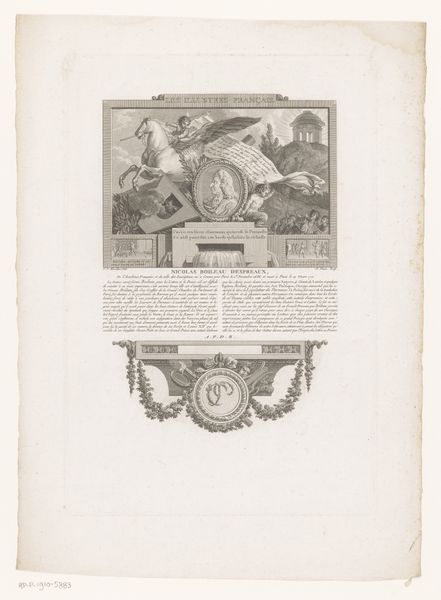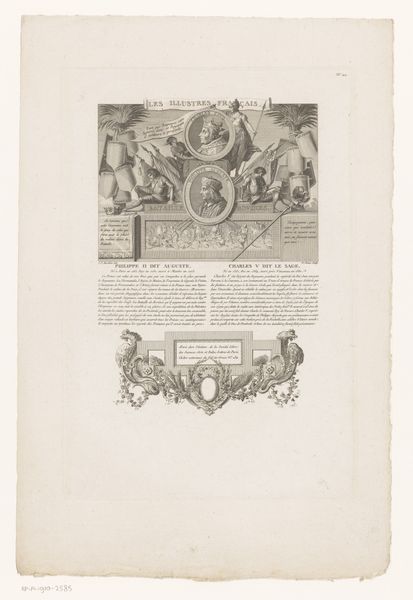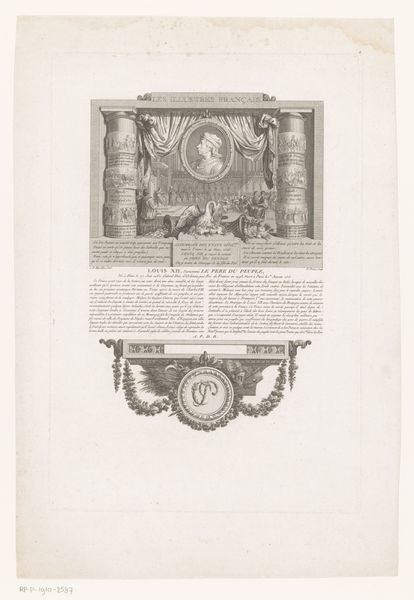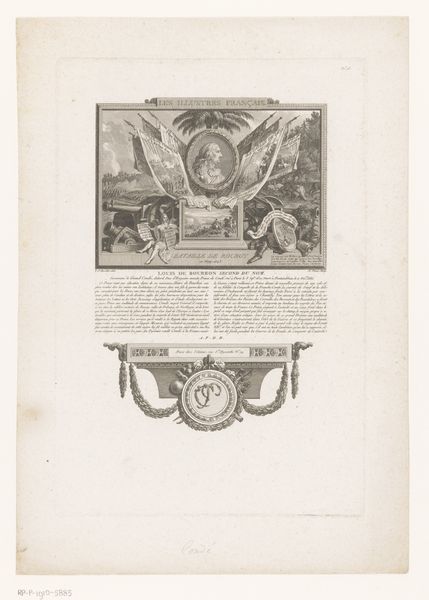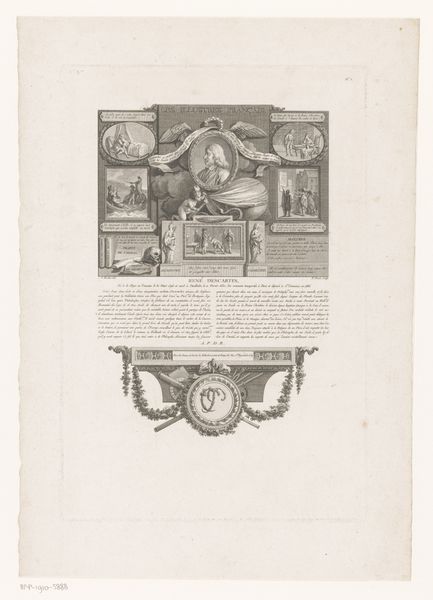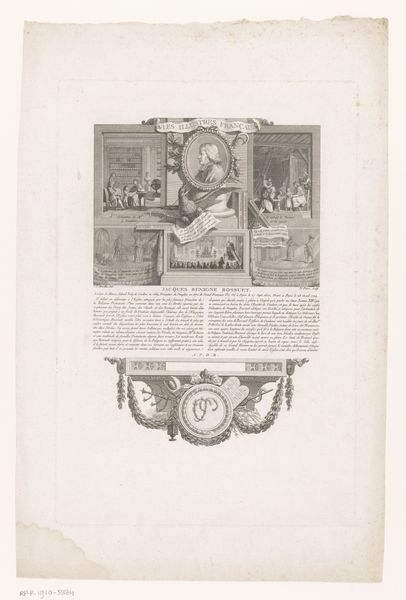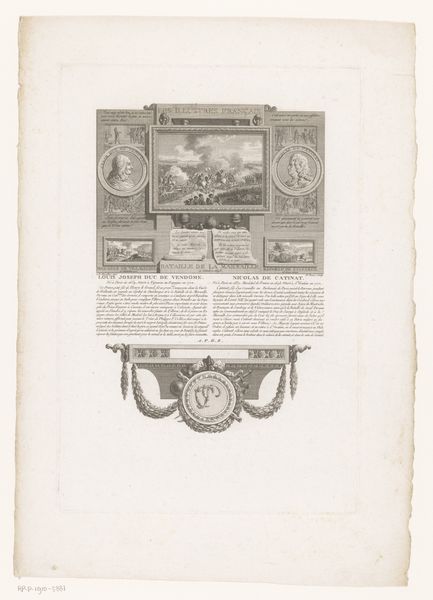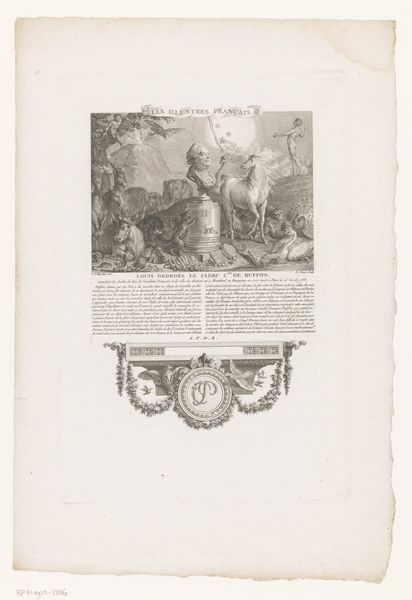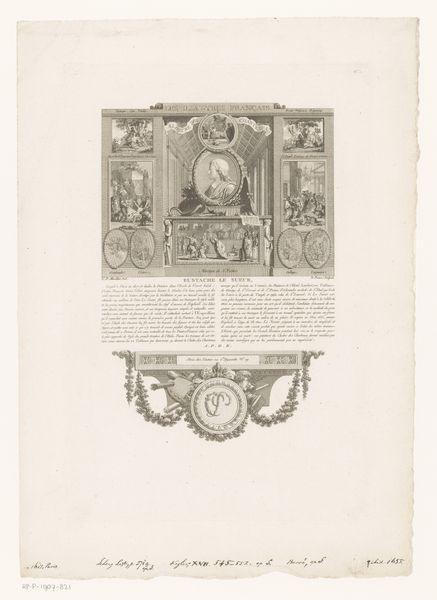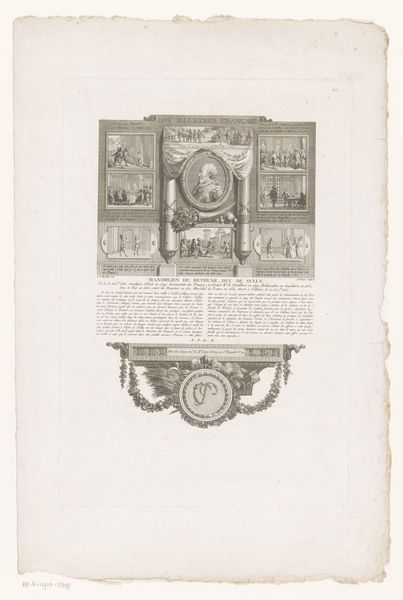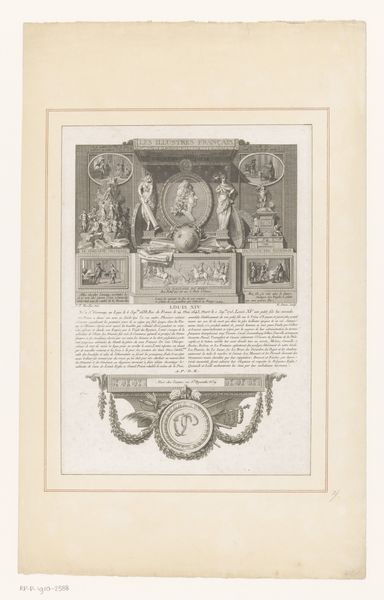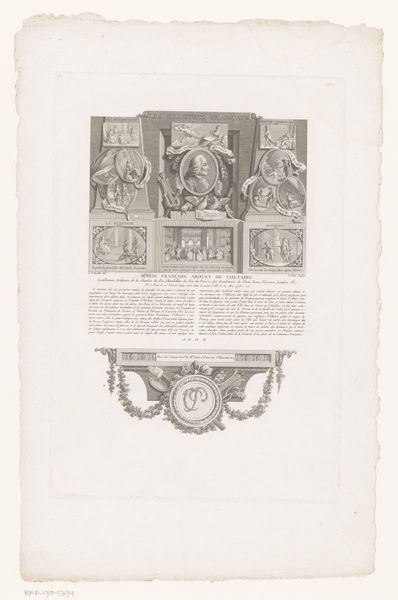
print, paper, dry-media, graphite, engraving
#
portrait
#
neoclacissism
#
allegory
# print
#
figuration
#
paper
#
dry-media
#
line
#
graphite
#
history-painting
#
engraving
Dimensions: height 336 mm, width 230 mm
Copyright: Rijks Museum: Open Domain
Curator: This print is titled "Allegorical Portrait of Abraham Duquesne" created sometime between 1790 and 1816 by Nicolas Ponce. The Rijksmuseum houses it, and it features line work in graphite and engraving on paper. Editor: There is such formality about the composition – almost reverential in its tone, wouldn’t you say? It reminds me of a monument, but rendered so delicately. The engraving captures such precise details. Curator: Precisely. And look closely at those details. Ponce's choice to use engraving here signifies a deliberate act of commemoration. Consider the labor and skill involved in crafting these fine lines; it speaks to the esteem held for Duquesne and highlights the importance of skilled artisanship. It makes a bold statement celebrating French naval power and nation-building. Editor: I agree. Duquesne becomes an emblem. Given that Duquesne was a Huguenot admiral, I wonder if this portrait engages with questions of religious identity within French society during or after the Revolution. Perhaps this print aims to solidify a narrative of French greatness, absorbing even those who were once religious minorities. The naval scene suggests a moment of colonial expansion and control as well. Curator: That’s insightful. And how fascinating it is to examine the iconography present. We see ships, cannon, and the bust of Duquesne himself, all carefully rendered. These are objects not merely of aesthetic interest but symbolic of French military might and naval technological advancement, rendered possible by the materials they are composed of and the hands who wrought them. The image becomes an index of its production. Editor: So it is a way of not only preserving his likeness, but almost deifying Duquesne by casting his image into a narrative that advances notions of empire. The labor that goes into memorializing is made all the more significant given the violence enacted through war. Curator: It really encapsulates an era – a statement rendered in graphite and ink, meant to last. Its permanence lies not just in the subject, but the method, materials, and intent behind its creation. Editor: It certainly gives us pause to reflect on how history is visualized and commodified, even today. It’s never just a picture, is it?
Comments
No comments
Be the first to comment and join the conversation on the ultimate creative platform.
